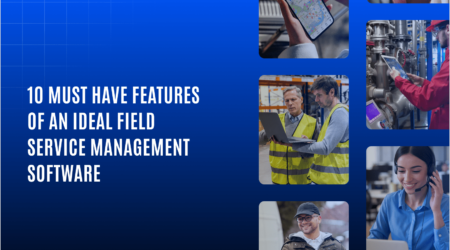The Importance of Field Employee Time Tracking

In today’s fast-paced business world, managing a mobile workforce can be challenging. However, with the advent of advanced fleet management software, field employee time tracking has become not just a possibility but a pivotal part of ensuring operational efficiency and productivity. This comprehensive guide will delve into the significance of tracking field employee time, its benefits, and how integrating it with advanced fleet management software can revolutionize your business operations.
Understanding Field Employee Time Tracking
Field employee time tracking is more than just clocking in and out. It’s about capturing accurate data on how employees spend their time throughout the workday, especially when they are out in the field, away from a traditional office setting. This data is crucial for multiple reasons, from payroll processing to productivity analysis and beyond.
Why It’s Essential
- Improved Payroll Accuracy: Ensures employees are paid accurately for the hours they work, reducing errors and disputes.
- Enhanced Productivity: Identifies areas where time is used efficiently and spots opportunities for improvement.
- Better Project Management: Helps in allocating resources effectively, understanding project timelines, and managing client expectations.
- Compliance and Transparency: Keeps businesses in line with labor laws and provides transparency into working hours and conditions.
The Essence of Time Tracking for Field Employees
Field employee time tracking goes beyond the simple act of noting the start and end of a workday. It encompasses a range of activities including, but not limited to, traveling to job sites, completing specific tasks, taking breaks, and managing unforeseen delays or extensions in work. Here’s why it’s essential:
Transparency and Accountability:
It fosters a culture of honesty and accountability, as employees know their work time is being monitored and assessed. This encourages them to utilize their time effectively.
Operational Efficiency:
By understanding how time is spent in the field, managers can identify bottlenecks, streamline workflows, and deploy resources more strategically.
Fair Compensation:
Accurate time tracking ensures that employees are fairly compensated for the actual hours worked, including overtime, which in turn boosts morale and reduces turnover.
How It Works
Implementing a field employee time tracking system involves several key components:
Mobile Applications:
Most time tracking systems today leverage mobile technology, allowing employees to clock in and out directly from their smartphones or tablets. These apps can also capture location data, providing a geotagged timestamp for further accuracy.
Task and Project Tracking:
Employees can log the time spent on individual tasks or projects, while offering insights into productivity and helping managers with project planning and resource allocation.
Automated Reminders and Alerts:
To ensure compliance and accuracy, time tracking systems often include features like automated reminders for employees to clock in or out and alerts for managers when anomalies or discrepancies in time records are detected.
Integration with Payroll Systems:
Many time tracking solutions offer integration with payroll systems, streamlining the process of calculating pay based on the recorded hours, including different rates for overtime or specific types of work.
The Benefits of Advanced Tracking
The adoption of advanced time tracking solutions brings several tangible benefits:
Data-Driven Decisions:
With comprehensive data on how field employees spend their time, managers can make informed decisions on staffing, project timelines, and cost estimates.
Improved Work-Life Balance:
Accurate tracking helps in enforcing fair work hours, contributing to a better work-life balance for employees.
Enhanced Client Satisfaction:
Transparency in time spent on projects can be shared with clients, building trust and enhancing satisfaction through clear communication and accountability.
The Role of Advanced Fleet Management Software
Advanced fleet management software transcends traditional boundaries, while offering solutions that streamline operations, improve safety, and enhance the management of field employees. By incorporating time tracking features, businesses can gain real-time insights into their fleet operations and workforce productivity.
Key Benefits
- Real-time Visibility: Track employee locations and job status, enhancing decision-making and response times.
- Route Optimization: Ensure employees take the most efficient routes, saving time and reducing fuel costs.
- Automated Reporting: Generate detailed reports on employee hours, job completion, and fleet performance.
- Safety and Compliance: Monitor driving behaviors and ensure compliance with safety standards and regulations.
Now, let’s explore the integration of field employee time tracking with advanced fleet management software, a synergy that unlocks unparalleled efficiencies.
Integrating Time Tracking with Fleet Management
The integration of time tracking into fleet management software represents a leap forward in managing field employees. This combination offers a holistic view of operations, from the moment an employee starts their day to the completion of their tasks.
How It Works
Start of Day: Employees log in through the software, automatically registering their start time.
During the Day: The software tracks their location, tasks completed, and time spent on each job.
End of Day: Employees log out, automatically capturing their end time, with the software compiling a comprehensive report of the day’s activities.
This seamless integration ensures that every minute is accounted for, directly linking time spent to specific tasks and outcomes.
Overcoming Challenges
While the benefits are clear, implementing a field employee time tracking system within fleet management software can present challenges. These include employee privacy concerns, technology adoption, and data management. However, with transparent communication, proper training, and secure data practices, these challenges can be effectively managed.
Best Practices for Implementation
- Clear Communication: Explain the benefits of the system to your employees, emphasizing privacy and security measures.
- Training and Support: Offer comprehensive training to ensure everyone is comfortable and proficient with the new system.
- Continuous Improvement: Regularly review the system’s effectiveness and make adjustments based on feedback and evolving business needs.
Conclusion
Field employee time tracking, especially when integrated with advanced fleet management software, is indispensable for modern businesses. It enhances payroll accuracy, boosts productivity, and provides critical insights into operations. By adopting this technology, companies can not only optimize their workforce management but also gain a competitive edge in the market.
Transitioning towards a future where efficiency and productivity are paramount, embracing these technological advancements is not just an option but a necessity for businesses aiming for growth and success.


